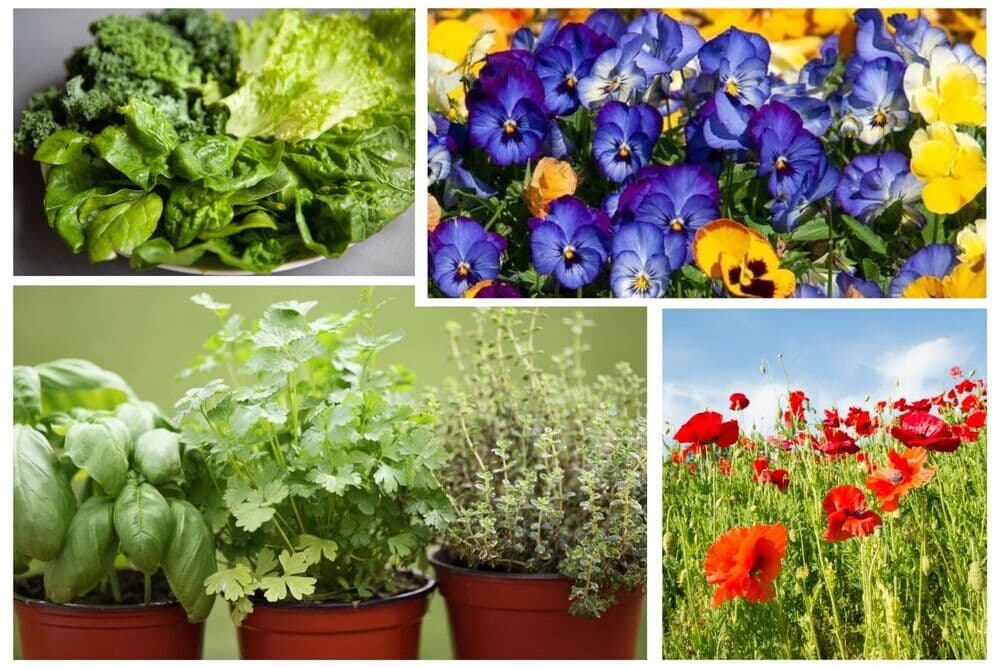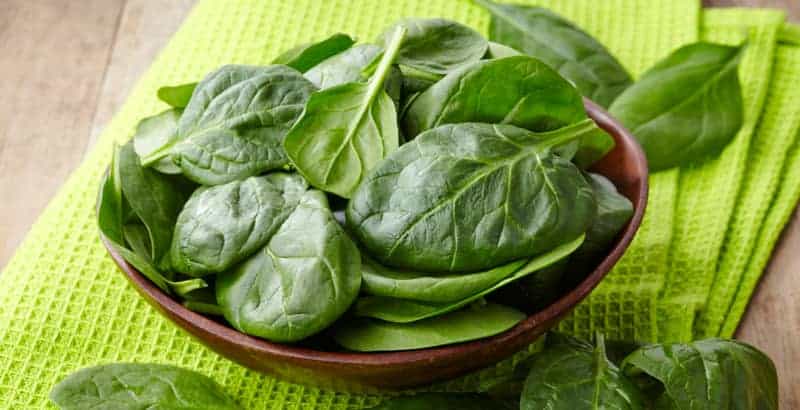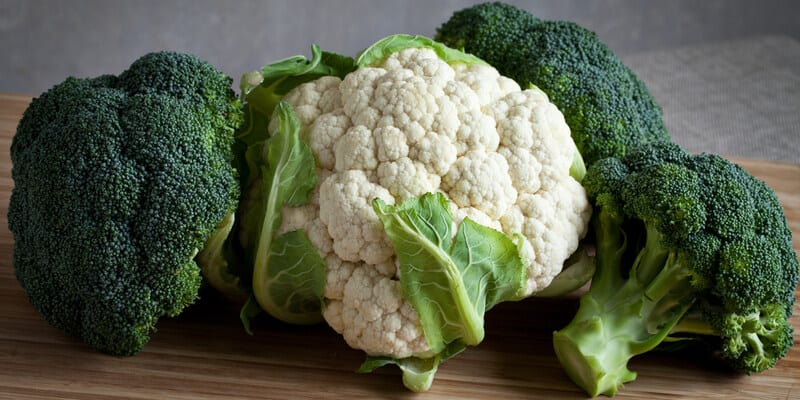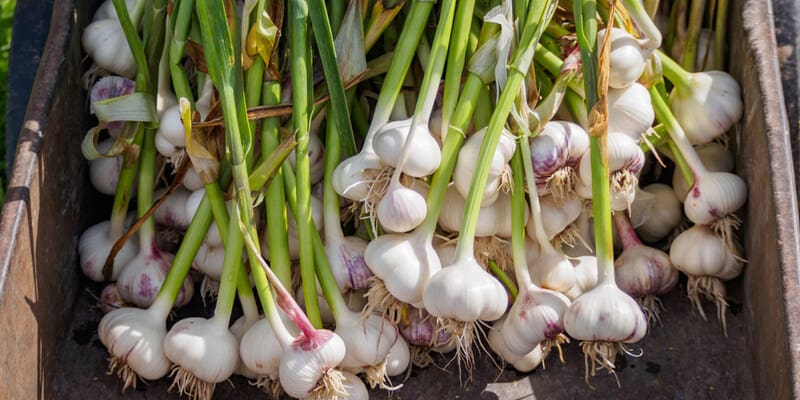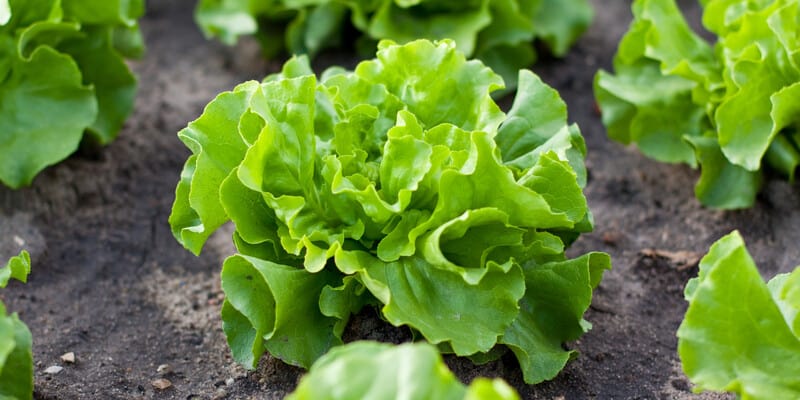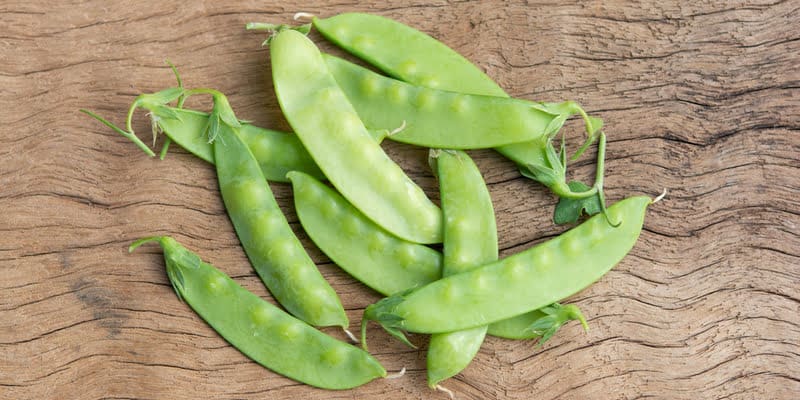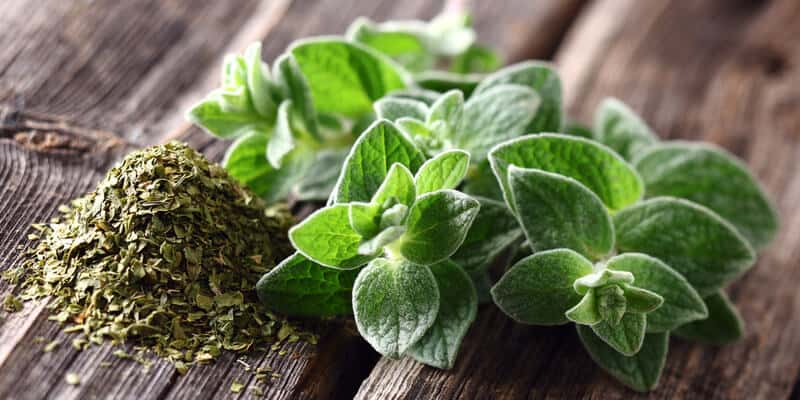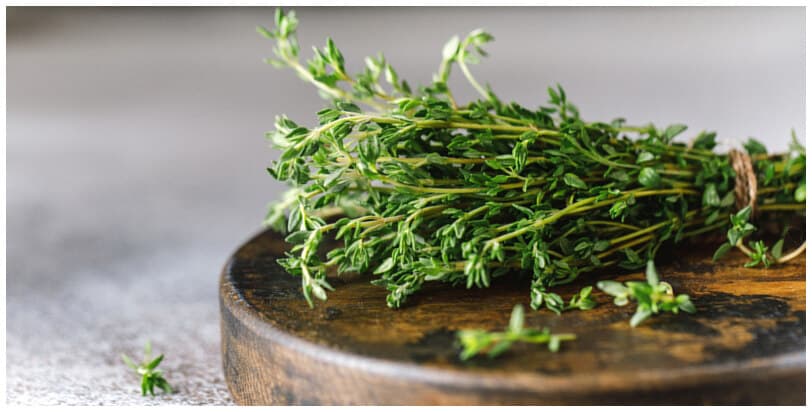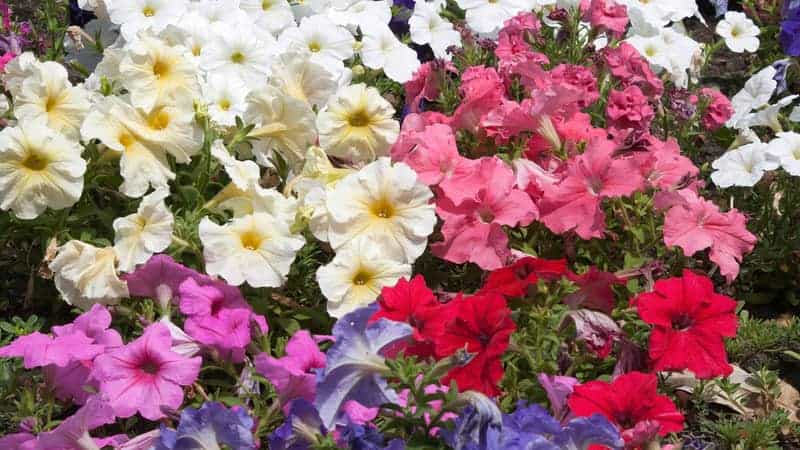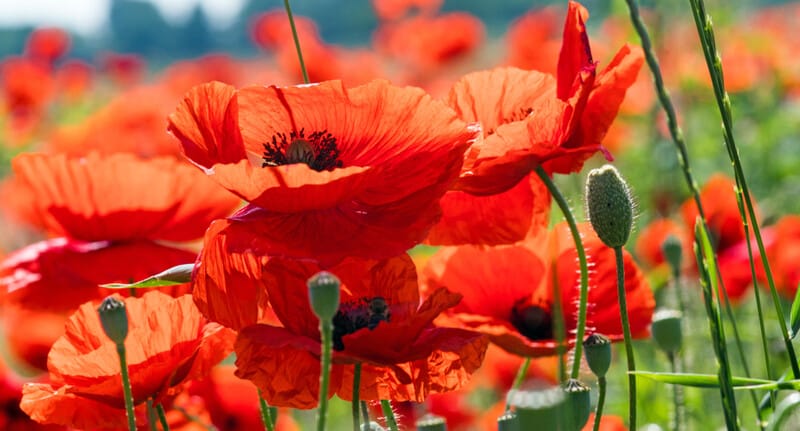Cooler weather doesn’t have to mean the end of growing your vegetables! Autumn is an excellent time for sowing vegetable and herb seeds that love cooler conditions.
These will be ready during winter, providing fresh produce throughout spring — giving you new ingredients in meals each day.
But with autumn’s arrival comes an enormous challenge: achieving successful harvests when the days are shorter and colder.
Why grow vegetables and flowers in autumn?
Many gardeners think of spring as the best time to plant vegetables and flowers. But autumn can be an ideal time to grow your garden.
Here are a few reasons why:
- The soil is still warm from the summer sun, which helps roots develop quickly.
- There’s less competition from weeds since they’ve already had their chance to grow in the spring.
- Autumn rains help keep the soil moist, making it easier for plants to establish their roots.
- Cooler temperatures can mean tastier vegetables, since sweetness is often related to lower temperatures.
- Fall-planted crops often produce higher yields than those planted in spring, thanks to the longer growing season.
So, if you’re looking to add some colour to your garden this year, don’t wait until spring — get a head start by planting in autumn.
How to prepare the soil for planting autumn vegetables and flowers?
Autumn is the perfect time to plant vegetables and flowers in Australia.
The soil is still warm from the summer sun, but the rains have arrived, providing the perfect conditions for new plants to take root.
Here are a few tips to help you prepare the soil for planting autumn vegetables and flowers.
- First, loosen the soil with a spade or tiller. This will help the roots to spread more easily and promote better drainage.
- Next, add some organic matter to the soil. This could be in the form of compost, well-rotted manure or peat moss. This will help to improve the soil’s structure and provide nutrients for the plants.
- Finally, water the soil deeply before planting. This will help the roots to establish themselves more quickly.
Another important consideration is pH levels. Most vegetables and flowers prefer slightly acidic soil, so if your soil is on the alkaline side, you may need to add some sulphur.
With a little preparation, you can ensure that your soil is perfect for planting autumn vegetables and flowers.
What can you plant in autumn in Australia?
As the weather cools down in autumn, many gardeners in Australia start to prepare their gardens for winter.
However, there are still plenty of plants that can be successfully grown during this season.
Vegetables to plant in autumn
Hardy vegetables such as kale, spinach and Brussels sprouts will continue to thrive in the cooler temperatures.
You can plant root vegetables such as carrots and parsnips in late autumn for a winter harvest.
Cool-weather crops like broccoli, peas, and cabbage can be planted in late September or early October.
Baby Spinach
Spinach is a cool-weather crop that thrives in the autumn months.
Here are a few quick tips to get you started:
- Baby spinach grows best in sunny locations. If you can’t find a spot that gets at least six hours of direct sunlight per day, consider planting your spinach in a pot or container so that you can move it around to chase the sun.
- Baby spinach likes well-drained, nutrient-rich soil. If your soil is heavy or clay-like, consider amending it with some compost or organic matter before planting.
- Spinach seeds are small, so it’s best to sow them on top of the soil and then lightly cover them with sand or vermiculite. Keep the soil moist but not wet, and thin the seedlings out once they’ve sprouted.
- Be sure to water your plants regularly — especially during hot, dry weather. If possible, use a drip irrigation system or soaker hose.
Broccoli and Cauliflower
If you’re looking to add some broccoli and cauliflower to your autumn garden, there are a few things you’ll need to keep in mind.
- Start with seedlings rather than seeds. Autumn is a short season, so you won’t have time to wait for seeds to sprout. Look for healthy seedlings at your local nursery or garden centre.
- Add some organic matter to your soil. This will help it keep moisture and nutrients, both of which are important for successful broccoli and cauliflower growth.
- Fertilise regularly. A good fertiliser will help your plants get the nutrients they need to thrive in cooler temperatures.
- Water regularly, but not too much. Too much water can encourage fungal diseases, so err on the side of caution and water only when the soil is dry to the touch.
Cabbage
Cabbage is a cool-weather crop that thrives in the autumn months.
- Choose a sunny spot in your garden that has well-drained soil. Cabbage likes to grow in moist conditions, so be sure to water regularly. Add a layer of organic mulch around the plants to help keep moisture and control weeds.
- When it comes to fertilising, cabbage is a heavy feeder and will appreciate regular applications of compost or manure. If you’re growing cabbage in containers, be sure to use a potting mix that is high in organic matter.
- As your cabbage heads start to form, you may notice some insects taking up residence. Aphids are particularly fond of cabbage, so be sure to check your plants regularly and remove any insects you find. A strong blast of water from the hose will usually do the trick.
With a little care and attention, you can easily grow healthy cabbage plants in your autumn garden.
Just remember to keep an eye out for pests and give them plenty of water and nutrients.
Garlic
Garlic is a versatile crop that can be grown in a wide range of climates. Here in Australia, we are lucky enough to be able to grow garlic all year round.
However, garlic thrives in autumn when the weather is cool and dry.
- Make sure you choose a sunny spot in your garden. Garlic likes plenty of sunlight, so a spot that gets at least six hours of sun per day is ideal.
- Prepare your soil by adding some compost or well-rotted manure. This will help to improve drainage and provide nutrients for your garlic plants.
- Plant your garlic cloves around 15cm apart, and water them well.
- Mulch your garlic bed with straw or hay to help retain moisture and keep the weeds at bay.
Kale
Kale is a hardy, leafy green that is packed with nutrients, and it’s relatively easy to care for.
- Kale thrives in sunny spots, so make sure to choose a spot that gets at least six hours of sunlight per day.
- Kale prefers well-drained soil that is rich in organic matter. If your soil is heavy or clay-like, mix in some compost or sand to improve drainage.
- Kale seeds can be sown directly into the ground or started indoors in seed trays. If starting indoors, sow the seeds about six weeks before the last frost date.
- Once the seedlings have sprouted, thin them out so that they are spaced about 20cm apart. This will help ensure that they have enough room to grow.
- Kale needs plenty of water to prosper, so be sure to keep the soil moist (but not wet).
Lettuce
You’ll never have to run out to the shops to complete your salad again. Pick the best variety of lettuce to grow in autumn — this includes loose leaf or cos lettuce.
The good thing about these types is you can pick the outer leaves for consumption while the central head continues growing.
- To grow, just sow the lettuce seeds in your garden, or start them in trays and transplant them after 4-6 weeks.
- Space them 20-30cm apart so they have room to flourish.
- Keep plants in partial shade, and water daily to prevent them from drying out.
Snow Peas
Snow peas are an excellent choice for gardens in cooler climates.
They thrive in cool weather and do not require a lot of nitrogen in the soil.
- Mulch or compost can help to condition the soil before planting and soak the seeds overnight to improve germination rates.
- Snow peas should be sown at a depth of 5-10cm, and the seedlings kept in the shade.
- It is important to keep the young plants watered, as they will quickly dry out and die if they get too dehydrated.
With proper care, snow peas can produce an abundant crop of sweet, crisp peas that are perfect for snacking on straight off the vine.
Herbs to plant in autumn
The cooler weather means that herb plants won’t dry out as quickly, and there’s less chance of pests and diseases.
Some of the best herbs to plant in autumn include basil, oregano, parsley and thyme.
Basil
Basil is a delightful herb that can add a touch of flavour to any dish.
- Basil loves the sun, so a spot near a window or a sunny place in the yard will be ideal.
- Water your basil regularly. The soil should be moist but not soggy, and you may need to water more frequently during hot weather.
- Fertilise your basil every few weeks with good-quality plant food. This will help it grow strong and healthy.
- Harvest your basil leaves when they’re big enough to use. Cut the stem just above a leaf node, and enjoy your fresh basil in any dish you desire.
Oregano
Oregano is a versatile and delicious herb that can be used in a variety of dishes. But did you know that oregano is also a great plant for your garden?
Oregano is a hardy, aromatic ground cover that can help to prevent soil erosion and keep your plants healthy.
- Choose a sunny spot in your garden that has well-drained soil. Oregano does not like wet feet, so make sure the spot you choose is not prone to puddling.
- Sow oregano seeds thinly, covering with a fine layer of sand or vermiculite. Water regularly and fertilise monthly with a general-purpose liquid fertiliser. Keep the seedbed moist but not too wet until germination occurs.
- Oregano is ready to harvest when the leaves are large enough to use. Simply snip off what you need, being sure to leave enough leaves on the plant so it can continue flourishing.
Parsley
Parsley plants are best grown in early spring or autumn.
This versatile herb has many uses both in and out of your kitchen — it’s a topping, a flavour accent, and even an ornamental plant.
- You can start it from a nursery seedling, or grow them by yourself from seed. Sow seeds 1cm deep and 2-5cm apart in soil that drains well, with partial shade.
- Keep plants well-watered but not too wet to encourage germination.
- If you’re growing them indoors, make sure you’re not using a soil potting mix.
Thyme
Growing thyme is easy and fun, and it’s a great way to add some flavour to your cooking.
- Thyme prefers to grow in a position in full sun or half-sun, with light somewhat gritty soil that has been enriched with humus for moisture retention.
- Hardiness varies with thyme species, but most will withstand moderate frosts.
- To encourage fresh growth, shear off the old dry flower heads.
- When harvesting thyme, cut the stems just above where the leaves join the stem.
You can then dry the thyme by tying the stems together and hanging them upside down in a dark, cool place. Once the thyme is dry, you can store it in an airtight container for later use.
Flowers to grow in autumn
In most parts of the country, it’s the perfect time to sow seeds for annual flowers such as pansies, petunias, and poppies.
Pansies
Pansies are one of the most popular flowers for autumn gardens.
These cheerful blooms come in a wide range of colours, and they’re relatively easy to care for.
- Choose a sunny spot in your garden that has well-drained soil. Pansies don’t like wet feet, so avoid areas that tend to stay soggy after rain. You can also improve drainage by mixing in some organic matter such as compost or peat moss.
- Wait until the soil temperature has cooled before planting your pansies. In most parts of Australia, this will be sometime in late April or early May. Once the soil is cool, simply dig a hole that’s large enough to accommodate the roots of your plant and water well.
Pansies are relatively drought-tolerant, but they’ll need regular watering during their first few weeks in the garden. After that, you can cut back to once or twice a week.
Petunias
Though they are typically associated with spring, petunias can also be a beautiful addition to your autumn garden.
- Like pansies, choose a sunny spot for your petunias, as they will need at least six hours of sunlight each day.
- Prepare the soil by mixing in some compost or manure. This will help to provide nutrients and improve drainage.
- Once you have planted your petunias, water them well and apply a mulch to help keep moisture.
- Finally, deadhead the flowers regularly to encourage continued blooming.
Poppies
Growing poppies in autumn may seem like a challenge, but with these quick tips, you’ll be on your way to a beautiful garden in no time.
- Choose a spot that gets plenty of sun and has well-drained soil.
- Prepare the soil by loosening it with a shovel and mixing in some compost or manure.
- Sow the seeds directly into the ground or start them indoors in pots.
- When the seedlings emerge, thin them out so that they are spaced about 10-15cm apart.
- Water regularly and be sure to deadhead the flowers to encourage more blooming.
Be sure to fertilise your flowers every few weeks with a water-soluble fertiliser to help them bloom their best.
With just a little effort, you’ll have a stunning autumn garden full of vibrant flowers.
What is the best way to water plants during the autumn months?
While autumn is a beautiful time of year, it can also pose challenges for gardeners.
In particular, watering plants during the autumn months can be tricky.
If you water them too much, the leaves may drop prematurely; if you water them too little, they may become stunted or wilted.
So, what is the best way to water plants during the autumn months in Australia? Here are a few tips:
- Check the soil before you water it. If it’s dry to the touch, then your plant probably needs a drink. But if the soil is still moist, then it’s best to wait until it starts to dry out before watering again.
- Water early in the day, so that the leaves have time to dry before nightfall. This will help prevent fungal diseases from taking hold.
- Water at the base of plants rather than on the leaves and put mulch around plants to help retain moisture.
- If you’re also maintaining outdoor plants, consider using a drip irrigation system instead of a sprinkler, which can waste water.
By following these tips, you can ensure that your plants stay healthy and thrive throughout the autumn months.
Looking for More Seasonal Planting Guides?
What pests or diseases might affect autumn plants?
The cooler temperatures provide the perfect environment for pests and plant diseases to flourish.
To protect your autumn plants, it is important to be on the lookout for common problems such as powdery mildew, aphids, and cabbage worms.
Powdery mildew
Powdery mildew is a type of fungal infection that can affect a wide range of plants, including annuals, perennials, vegetables, and fruit trees. The fungus spores thrive in warm, humid conditions, and they can spread quickly from plant to plant.
This type of mildew often appears as a white or grey powder on the leaves and stems of infected plants. It can cause the leaves to turn yellow or brown, and it can make the stems brittle. In severe cases, powdery mildew can kill the plant.
If you suspect that your plant has powdery mildew, take action immediately. Remove any affected leaves and dispose of them in a plastic bag. You can also try spraying the plant with a mixture of water and baking soda. If the problem persists, you may need to use a commercial fungicide. With prompt treatment, most plants will recover from powdery mildew with no lasting damage.
Aphids
Aphids are small, pear-shaped insects that feed by sucking the sap from plants. These small, sap-sucking insects are most active in cool, damp weather and can quickly build up to damaging levels in a garden. Left unchecked, they can cause damage to leaves and inhibit the plant’s ability to produce fruit or flowers.
In severe infestations, aphids can even cause plant death. Other than directly damaging plants, aphids can also spread harmful plant viruses. As they feed, aphids excrete a sticky substance called honeydew. This honeydew can encourage the growth of sooty mould, a black fungus that interferes with photosynthesis.
To protect your autumn plants from aphids, you can blast them with water from a hose or spray an insecticidal soap solution. You can also encourage natural predators like ladybugs and lacewings into your garden to help keep aphid populations in check.
Cabbage worms
Cabbage worms can wreak havoc on your autumn plants if left unchecked. These small, green caterpillars are the larvae of moths, and they love to feast on leafy greens like kale.
While a few cabbage worms may not seem like a big deal, a large infestation can quickly destroy an entire crop. Not only do cabbage worms eat the leaves of plants, but they also spread harmful bacteria that can cause disease.
If you find cabbage worms on your autumn plants, it’s important to take measures to control the population.
You can manually remove them, grow purple or red varieties of your veggies or spray a diluted mixture of neem oil on your plants.
Otherwise, you may end up with far fewer produce come winter.
Leaf spot
One of the most common problems that affects autumn plants is leaf spot. This fungal disease thrives in warm, wet conditions and causes small brown or black spots to form on the leaves. The spots eventually enlarge and merge, causing the leaves to turn yellow and fall off. In severe cases, the entire plant may die.
Leaf spot is most likely to occur during extended periods of wet weather, such as those often experienced during autumn.
The best way to prevent the disease is to water your plants early in the day so that the leaves have time to dry before nightfall. If leaf spot occurs, you can remove affected leaves and dispose of them in a plastic bag.
You can also spray the plant with a fungicide, but be sure to follow the manufacturer’s instructions carefully.
Growing plants can be as cool as the weather
Autumn is the next best time to care for your garden and stay outdoors. To keep your plants thriving this season, don’t skip out on maintaining your garden! It might be overwhelming to care for your garden on your own, but don’t worry — you can always consult professional gardeners or a local nursery. With a little planning, you can enjoy a beautiful and bountiful autumn garden.
Check out our next post on what to plant in winter.

